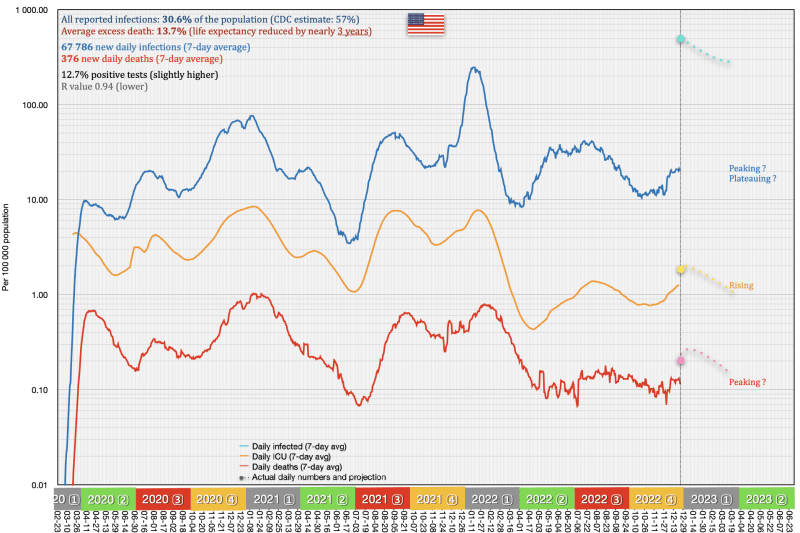 USA – 23 December
USA – 23 December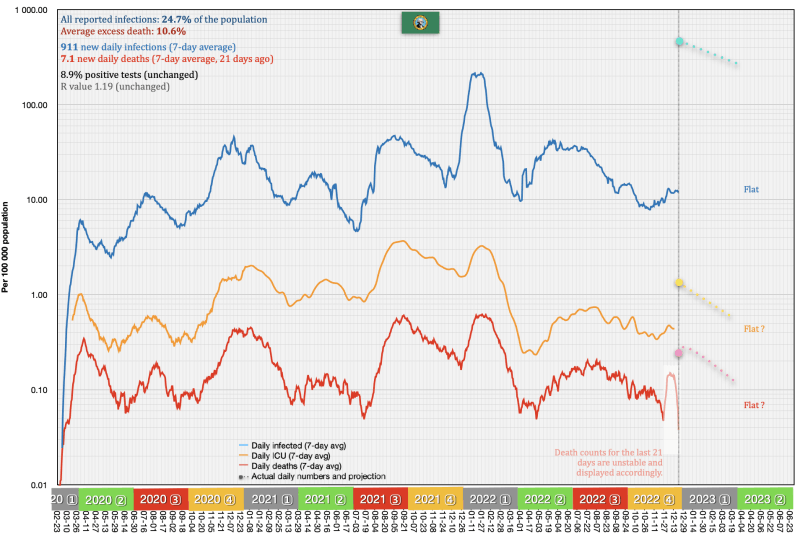 Washington State – 20 December
Washington State – 20 December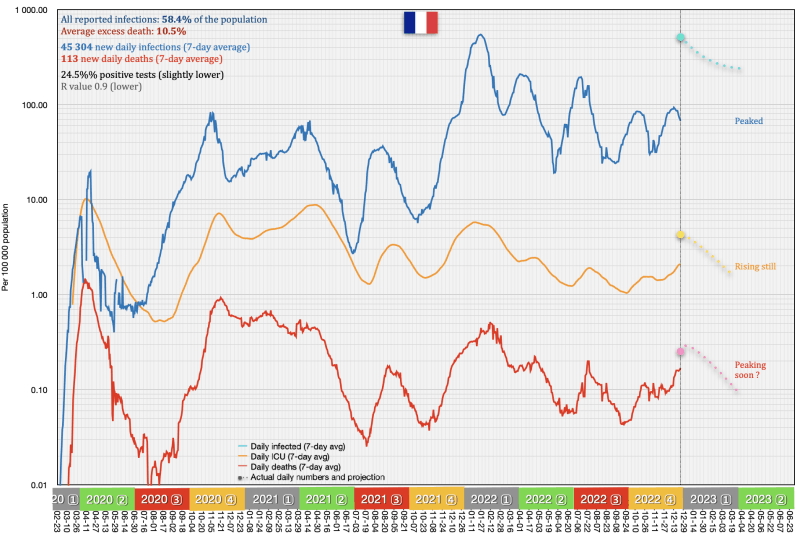 France – 23 December
France – 23 December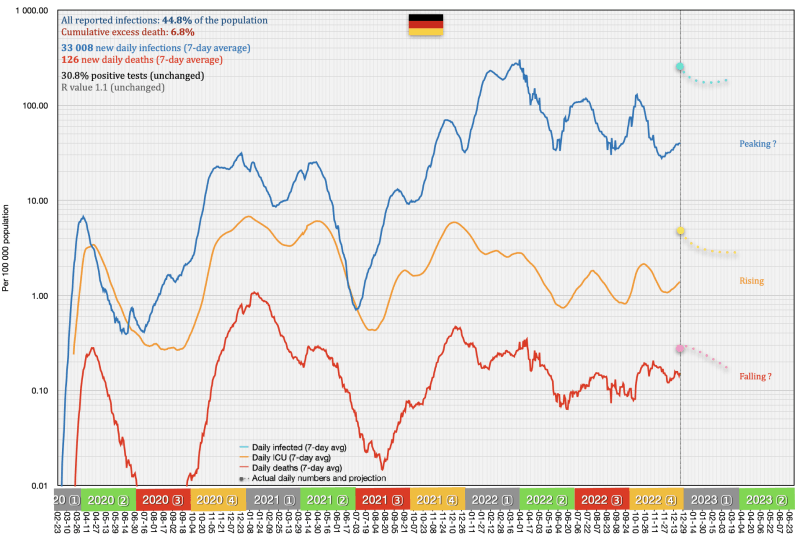 Germany – 23 December
Germany – 23 December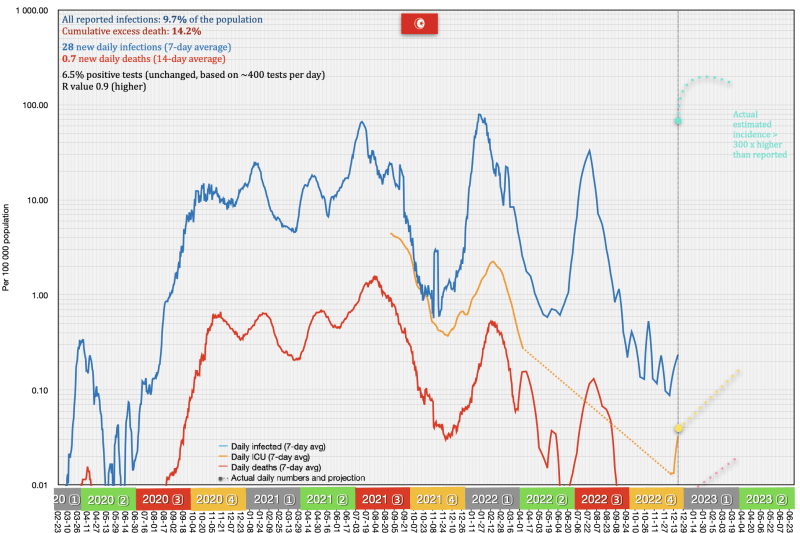 Tunisia – 19 December
Tunisia – 19 December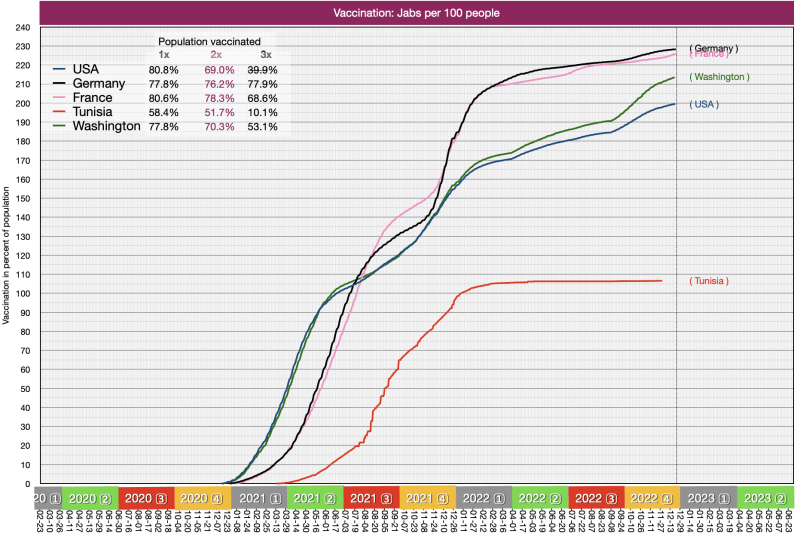 Vaccinations (Cumulative) – 23 December
Vaccinations (Cumulative) – 23 December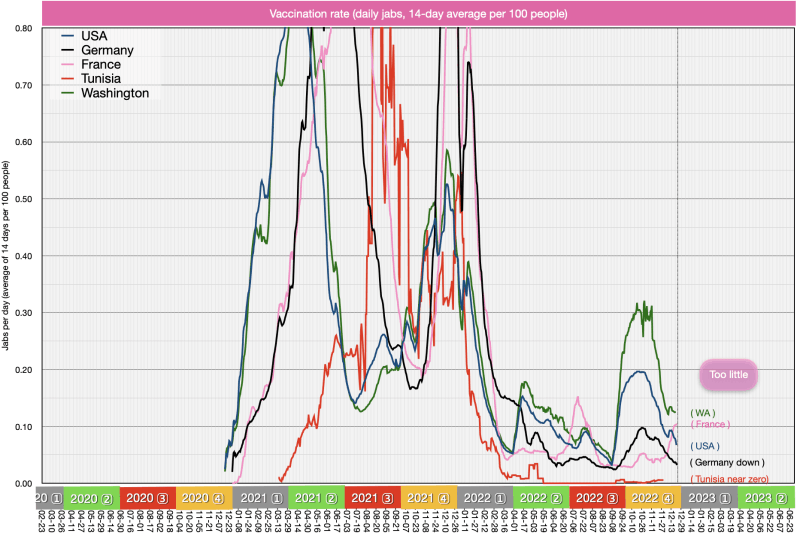 Vaccinations (jabs) per day – 23 December
Vaccinations (jabs) per day – 23 December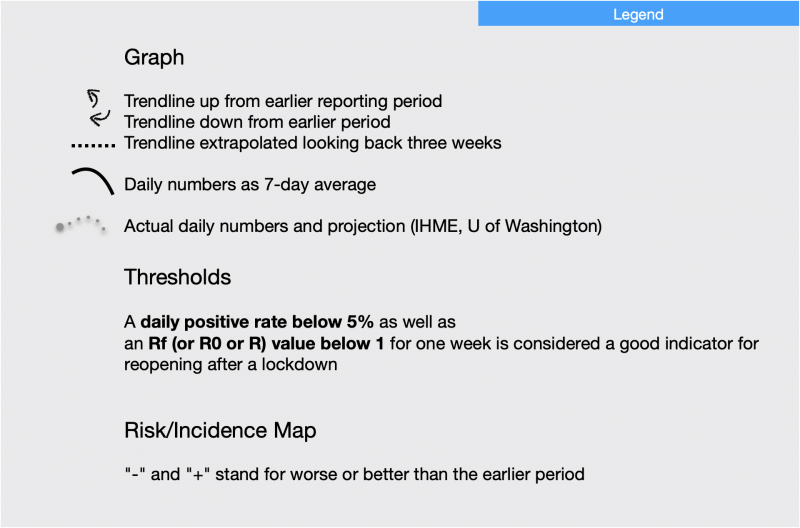 Legend
LegendNot Much Change
Numbers are oscillating at levels that are far from being low.
Our populations have lost their willingness to protect themselves and, in particular, others. If more people were to get vaccinated with the bivalent booster, the mortality curve would start going down rather than oscillating at a still-too-high level. Most importantly though, if we were to start masking again in crowded outdoor situations and indoors, the number of daily deaths could be reduced by as much as two thirds.
Germany: Incidence could be peaking, hospitalisations are still on the rise but mortality is going down a little. With more vaccinations using the bivalent booster, mortality could be reduced. I would like to stress that mask use in crowded and indoor situations would bring down the daily death count from 130 to an estimated 30.
France: Incidence has peaked but hospitalisations and mortality are still on the rise. They are expected to peak within the next 2-3 weeks. Vaccinations are picking up a little, catching up with Germany, but this is not enough to protect the vulnerable (as seen in the still-too-high mortality numbers).
United States: Numbers are going sideways except for hospitalisations, which are still going up, which is, together with hospitalisations from non-Covid infectious diseases, the biggest concern. Test-positive rate is increasing, which means that fewer tests are being performed. Covid-19 itself remains a concern, but now competing for attention with the flu and RSV.
Washington State: Numbers are going sideways but number reporting issues have not been resolved and thus data are not very reliable. In addition, daily testing is declining. No big changes to the fact that non-Covid infections are of equal, if not greater, concern.
Tunisia: Numbers are rising from an extremely low level (but incidence is still suspected to be 350x higher in reality). The R-value is approaching 1. Daily tests have increased to 350 but are still too few for statistical power. Non-Covid infections are probably of greater concern at the moment.
| Daily Incidence | Daily ITU / ICU | Daily Deaths | Daily Pos. Rate | Cumulative Excess Death | Mortality Projection | |
|---|---|---|---|---|---|---|
| USA | 20.7 → | 1.3 ↗︎ | 0.114 ↘︎ | 12.7% ↗︎ | 13.7% | ↑↘︎ |
| WA State | 12.0 → | 0.4 → | 0.086 → | 08.9% → | 10.6% | ↑↘︎ |
| France | 67.5 ↘︎ | 2.1 ↗︎ | 0.169 ↗︎ | 24.5% ↘︎ | 10.5% | ↑↘︎ |
| Germany | 39.7 ↗︎ | 1.4 ↗︎ | 0.152 ↘︎ | 30.8% → | 06.8% | ↑↘︎ |
| Tunisia | 00.2 ↗︎ | 0.01 | 0.006 ↗︎ | 06.5% → | 14.2% | ↗︎ |
The WHO could call an end to the pandemic in early 2023. What this means is that Covid-19 would be no longer a global health emergency but Covid-19 is here to stay. An article in ars technica (PDF) lists some of the challenges that remain, most importantly the extreme vaccine inequality between the global North and South. It also mentions challenges posed by Post-Covid (or Long Covid) conditions, in particular the disabilities resulting from these, which should mount over the coming years. The steady increase is owed to the fact that disabilities are cumulative, meaning that once a person is considered disabled, she is not likely to revert back to healthy. Each year, more people will be added to this disability pool.